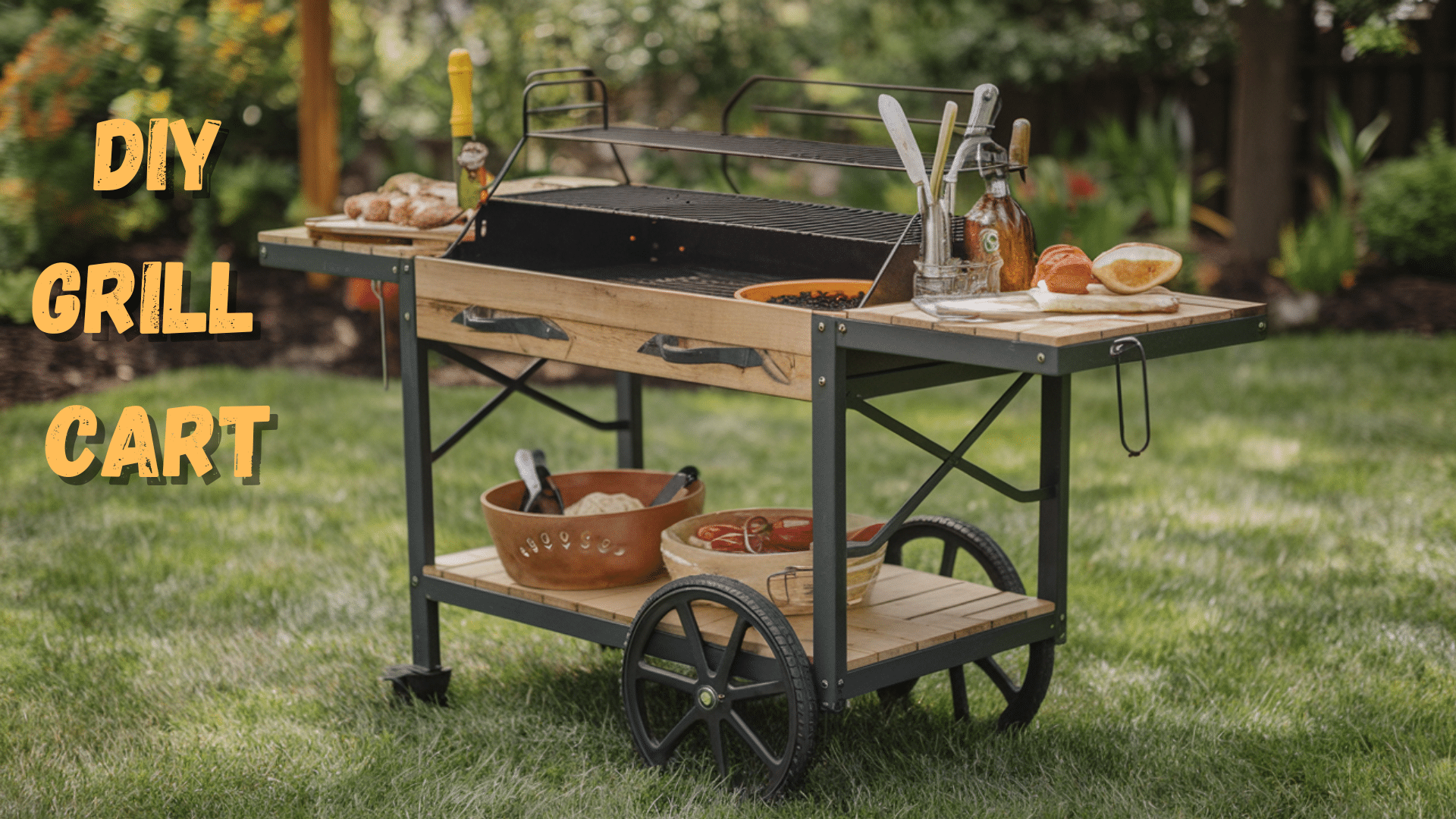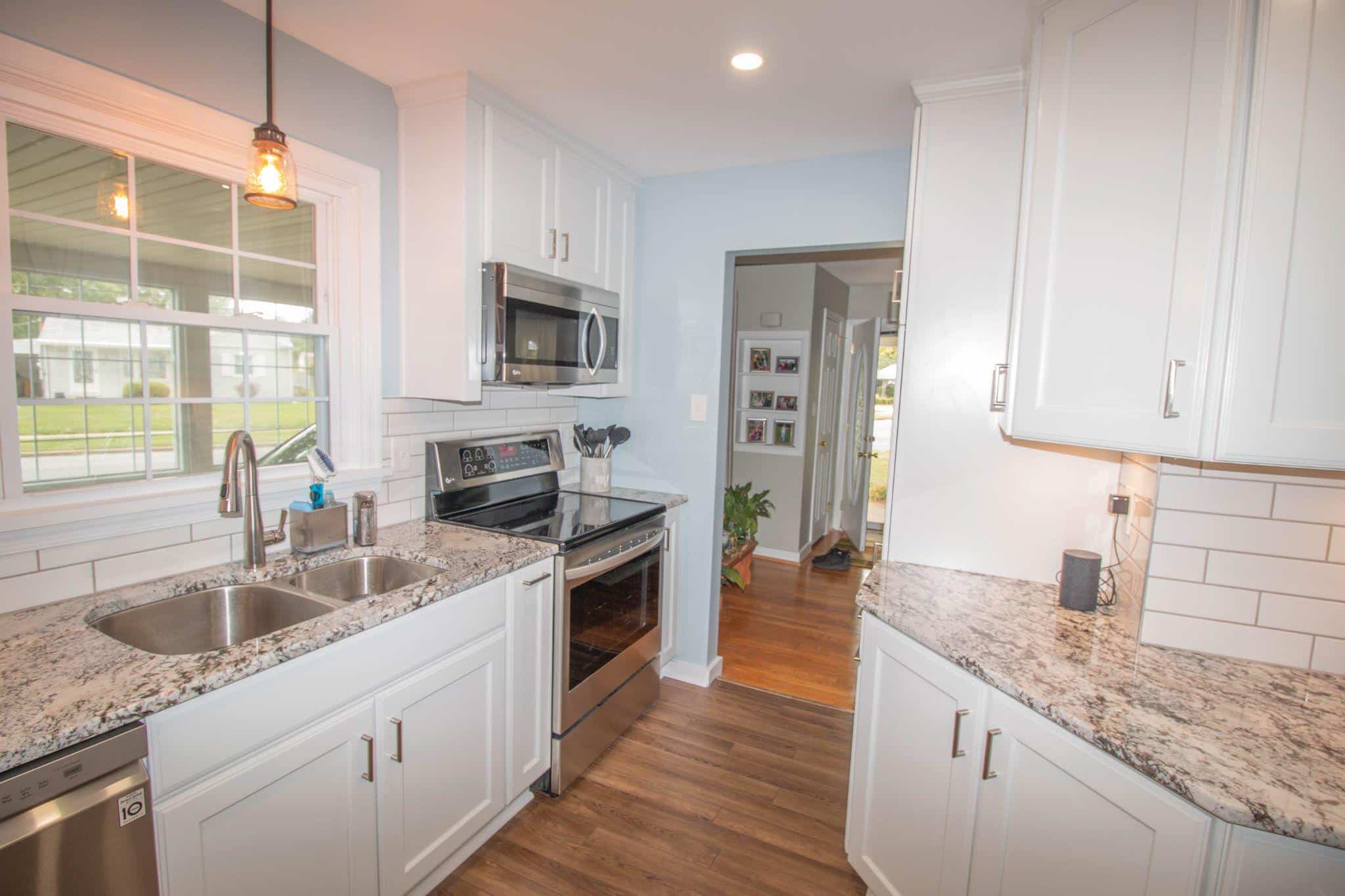Building a grill cart at home is easier than you think. Many home cooks spend extra money on pre-made units when they can create their custom solutions.
What if you could build a perfect grill cart that fits your needs and saves you hundreds of dollars? A cart that has all the storage space and features you’ve always wanted?
You can make a sturdy, functional grill cart that matches your outdoor space with basic tools and materials from your local hardware store.
This project takes just a weekend to complete and costs less than half of store-bought options.
Follow our simple steps to build your grill cart. We’ll show you exactly what you need and how to combine it.
Tools and Materials Required
Tools Required
| Tool | Purpose |
|---|---|
| Miter Saw | Making precise lumber cuts |
| Kreg Jig | Creating pocket holes |
| Brad Nailer | Attaching slat boards |
| Power Drill | Driving screws |
| 48-inch Clamp | Holding pieces during assembly |
| Sanding Tools | Smoothing surfaces |
| Paint Brushes | Applying paint and stain |
| Measuring Tape | Taking measurements |
| Pencil | Marking cuts and placements |
| Level | Ensuring even surfaces |
Materials Required
| Material | Specifications |
|---|---|
| 2×3 Lumber | For legs and frame |
| 2×4 Lumber | For top frame |
| 1×4 Boards | For lower shelf slats |
| 1×2 Boards | For shelf support |
| 2×6 Boards | For top shelf |
| Wood Glue | Standard wood adhesive |
| Kreg Screws | 2½-inch length |
| Wood Screws | 1¼-inch self-tapping |
| Brad Nails | 1¼-inch length |
| Exterior Primer | For base coat |
| Exterior Paint | For frame finish |
| Wood Stain | For top shelf |
| Wood Filler | Stainable type |
| Caster Wheels | For mobility |
| Optional Hardware | Hooks, bottle openers, towel bars |
Step-By-Step Process to Build a Grill Cart
Step 1: Prepare the Lumber
Start by cutting all lumber pieces using your miter saw. Take your time to measure each piece carefully before making cuts. You’ll need precise measurements to ensure your cart fits together properly.
Double-check all measurements against your cut list to prevent mistakes. Make sure to mark each piece clearly as you cut them to stay organized throughout the build process.
Step 2: Create Pocket Holes
Set your Kreg jig for 1½-inch thick wood. Add pocket holes to both ends of the 2×3 and 2×4 boards that will form the frame. These holes will create strong joints that hold your cart together.
Test the depth of your pocket holes on a scrap piece first to ensure proper fit. Remember to keep the pocket holes facing inward where they won’t be visible in the finished cart.
Step 3: Build Side Frames
Begin by marking 3½ inches up from the bottom of two cart legs. Connect two legs with a shorter 2×3 at these marks using wood glue and 2½-inch Kreg screws. Add a 2×4 between the legs at the top using the same method.
Build a second identical frame for the other side. Check for square corners using a carpenter’s square as you build. Use clamps to hold pieces in place while the glue sets for stronger joints.
Step 4: Assemble Main Frame
Join the side frames by attaching a 2×4 at the top for the back section. Use wood glue and screws, with a 48-inch clamp to hold everything steady. Add a 2×3 board 3½ inches from the bottom.
Install a 1×2 support for the lower shelf, then repeat this process for the front section. Check that the frame is level and square at each step of assembly. Use temporary braces if needed to maintain alignment while working.
Step 5: Install Lower Shelf
Place your 1×4 slat boards across the supports with about 3/8-inch gaps between them. Apply wood glue to the supports first, then secure each board with brad nails for a solid fit.
Use spacers to maintain consistent gaps between slats while installing. Make sure all slats are level and properly aligned before securing them permanently.
Step 6: Finish Lower Section
Start by applying primer to the entire frame. Once dry, add two coats of exterior paint, letting each coat dry completely. This step ensures your cart can withstand outdoor conditions.
Sand lightly between coats for a smoother finish. Pay extra attention to corners and joints where moisture might collect.
Step 7: Prepare Top Shelf
Apply wood stain to your 2×6 boards. Be coat them evenly and let them dry completely before moving to the next step.
Sand the boards thoroughly before staining to ensure the best possible finish. Apply the stain in the direction of the wood grain for optimal results.
Step 8: Install Top Shelf
Position the first 2×6 board with a 1-inch overhang on all sides. Secure it with screws, then add the remaining boards with ¼-inch gaps between them.
Fill any screw holes with wood filler, sand smooth, and touch up with stain as needed. Use a level to ensure each board sits perfectly flat. Consider pre-drilling screw holes to prevent wood splitting.
Step 9: Final Assembly
Turn your cart over and attach the caster wheels securely. Add any extra items like hooks, bottle openers, or towel bars to make your cart more functional.
Make sure all caster wheels are properly aligned for smooth rolling. Test the cart on a flat surface to ensure it rolls evenly and doesn’t wobble.
Video Tutorial
Check out this YouTube video for a detailed step-by-step tutorial on making a grill cart.
Essential Tips for Building Your Grill Cart
- Planning and Preparation Tips: Set up your workspace with good lighting and a flat surface. Keep all tools within reach but organized in a dedicated space. Print your plans and tape them to a nearby wall for easy reference. Buy extra materials to account for mistakes – about 10% more than the cut list suggests.
- Material Selection Tips: Choose straight boards without knots near the edges. Look down the length of each board to check for warping. Pick lumber that’s been properly stored and isn’t wet or damaged. Consider the weight rating of your caster wheels based on what you’ll store in the cart.
- Assembly Tips: Create a checklist for each step and mark them off as you complete them. Keep your work area clean and sweep away sawdust regularly. Work at a comfortable height – use sawhorses if needed. Have all your clamps ready before starting any glue-up process.
- Finishing Tips: Work in a dust-free area when applying finishes. Apply finishes when temperature and humidity are moderate. Use foam brushes for stains to prevent brush marks. Consider adding an extra coat of finish on high-wear areas like the top shelf and handles.
- Safety Tips: Always wear safety glasses and hearing protection when using power tools. Keep a first-aid kit nearby. Work in a well-ventilated area, especially during finishing. Unplug tools when making adjustments or changing bits.
Common Mistakes to Avoid when Building Your Grill Cart
1. Measurement and Cutting Errors
Many builders skip double-checking measurements before cutting wood. This leads to pieces that don’t fit together properly. Always measure twice and cut once.
Also, remember to account for the saw blade width when making multiple cuts. Keep a notepad to track your cuts and mark pieces clearly.
2. Incorrect Pocket Hole Setup
Setting the Kreg jig for the wrong wood thickness is a frequent error. This results in screws either poking through or not gripping enough. Test your pocket hole setup on scrap wood first.
Also, avoid placing pocket holes too close to the edge, which can split the wood. Keep holes at least 1½ inches from board edges.
3. Poor Joint Preparation
Skipping wood glue or rushing while it’s wet causes weak joints. Always apply glue evenly and clamp pieces together while the glue dries.
Clean excess glue immediately with a damp cloth. Wait for the full recommended drying time before moving to the next step.
4. Uneven Frame Assembly
Not checking for square corners during assembly leads to a wobbly cart. Use a carpenter’s square at each corner while building.
Check the frame is level on a flat surface. If the surface isn’t level, use shims during assembly to maintain proper alignment.
5. Shelf Installation Issues
Rushing through shelf spacing creates uneven gaps. Use uniform spacers between boards for consistent spacing.
Check that all slats are level before securing them. Make sure support boards are properly aligned to prevent sagging shelves.
6. Finishing Mistakes
Painting or staining without proper preparation leads to poor finish quality. Sand all surfaces thoroughly before applying any finish.
Apply thin, even coats rather than one thick coat. Let each coat dry completely before adding the next layer.
Conclusion
Building your own grill cart puts essential tools and cooking items right where you need them. This weekend project combines basic woodworking skills with practical outdoor functionality.
The materials cost less than store-bought options, plus you get to customize every detail.
Our guide walked you through each step, from selecting the right lumber to adding the final touches.
Following these steps carefully helps avoid common errors and ensures a sturdy cart that will last many cookouts.
Remember that careful measurement and proper finishing make the difference between a basic cart and one that has worked perfectly for years.
Take your time with each step, and you’ll create a practical addition to your outdoor cooking space.









One Comment
pin-up: pin-up – pin up azerbaycan